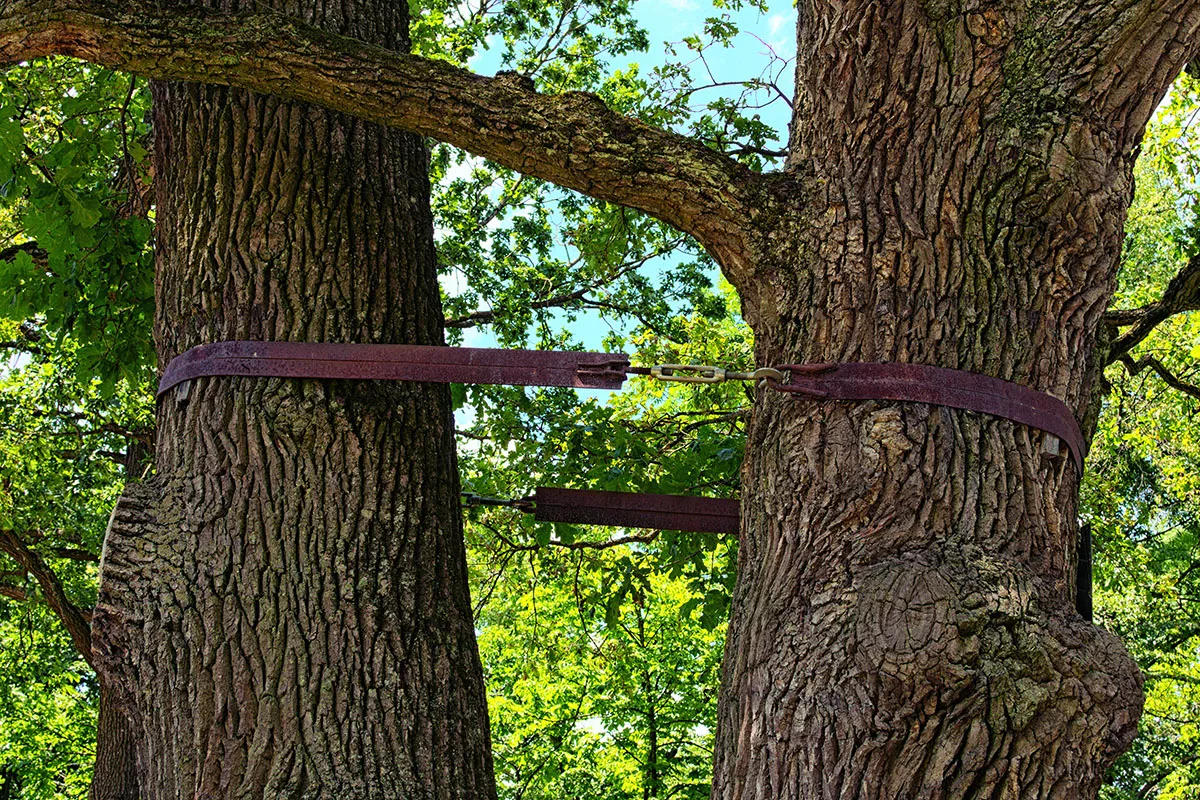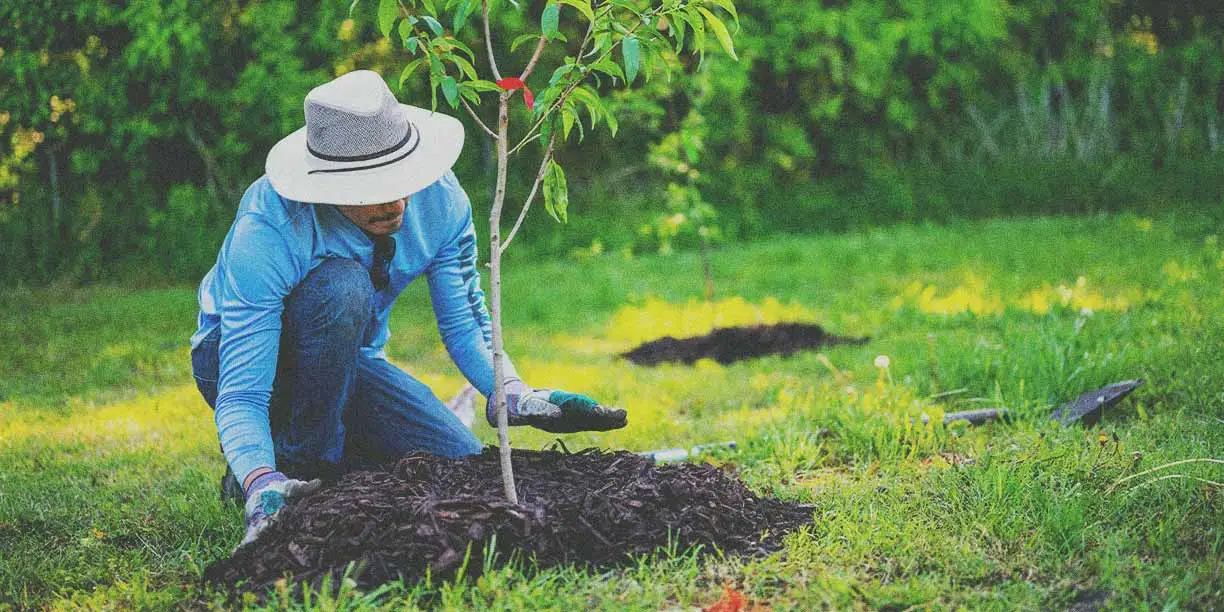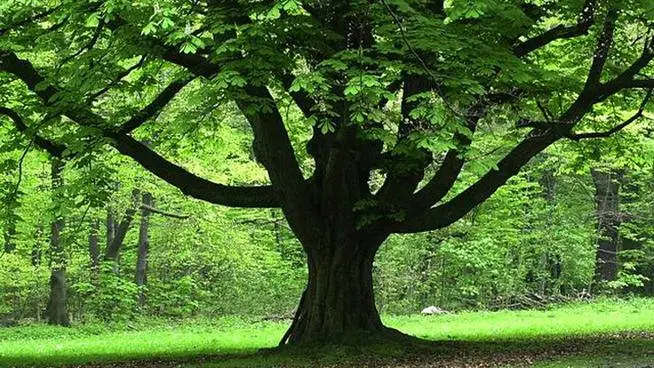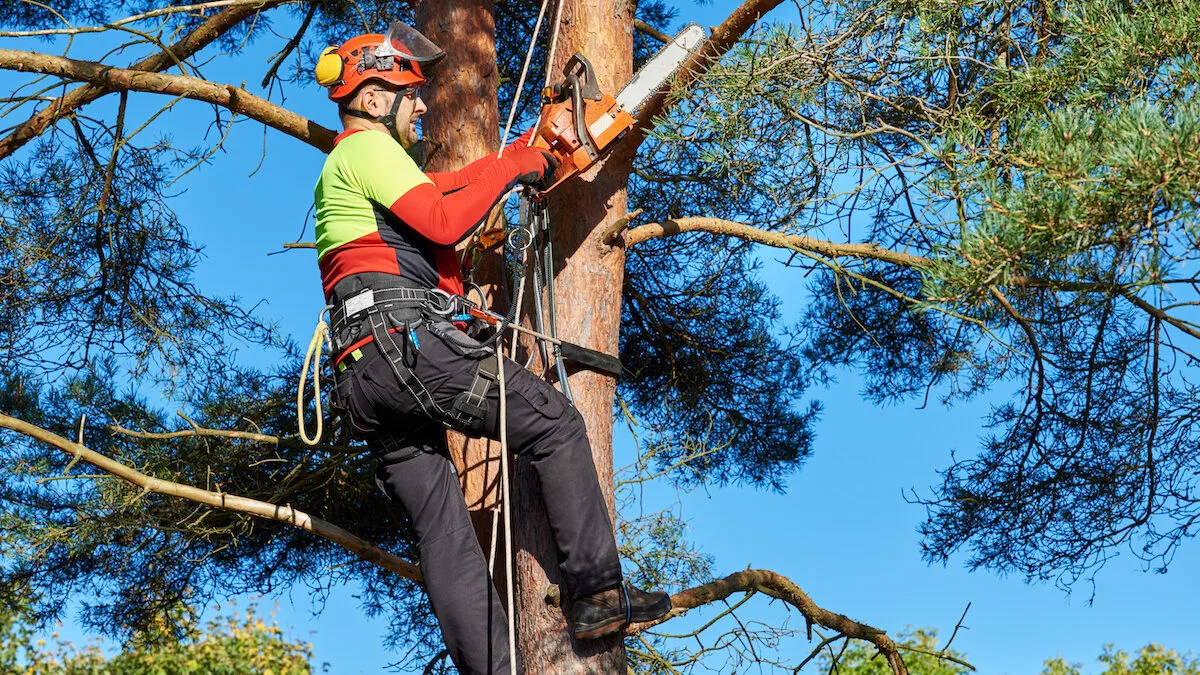Enhancing Tree Stability with Cabling: Techniques and Benefits
Trees play a crucial role in nature's grand symphony, offering our planet's health benefits. Let's delve into their environmental perks: oxygen production, carbon sequestration, and ecosystem stability.
First and foremost, trees are the unsung heroes of oxygen production. This process sustains human life and supports the diverse organisms that call Earth home.
Second, trees serve as nature's carbon vaults because they contain biomass that stores carbon dioxide. This process of sequestering carbon lessens the effects of climate change by lowering the atmospheric concentration of greenhouse gases. We can combat rising carbon levels and their detrimental environmental impact by planting more trees and preserving existing forests.
Lastly, trees contribute to ecosystem stability by fostering biodiversity and regulating ecosystems. Their roots help prevent soil erosion, while their canopies provide habitats for countless species of plants and animals. Additionally, trees play a vital role in maintaining water cycles, influencing rainfall patterns, and purifying groundwater.
Trees are indispensable allies in the fight for a sustainable future. By recognizing and harnessing their environmental benefits, we can nurture a healthier planet for future generations. Let's continue to cherish and protect our leafy companions for the well-being of all life on Earth.
The Economic Value of Trees: Timber, Property, and Savings
Trees enrich our environment and contribute significantly to our economy through their various economic benefits. Let's explore the economic importance of trees: the timber industry, property value enhancement, and cost savings through energy efficiency.
Firstly, trees are a cornerstone of the timber industry, providing raw materials for construction, furniture, paper, and countless other products. Sustainable forestry practices ensure a steady timber supply while preserving our forests for future generations, supporting jobs and economic growth.
Secondly, trees enhance property values in residential and commercial areas. Tree-lined streets and well-landscaped properties are more attractive to buyers and renters, leading to increased demand and higher property prices. Trees also provide shade and privacy, improving the livability and desirability of neighborhoods.
Finally, because trees use less energy, they save money. Trees placed carefully around buildings can act as natural insulation, lowering the demand for air conditioning and heating. By shading buildings from the sun and blocking cold winds, trees help lower energy bills and decrease carbon emissions.
Trees and Society: Enhancing Recreation, Well-being, and Beauty
Trees hold a special place in our communities, offering social benefits that enrich our lives in numerous ways. Let's explore the social impact of trees: recreational spaces, community well-being, and aesthetic value.
First, trees make for hospitable outdoor areas where people may bond with one another and the natural world. Sports, hiking, and picnics are among the outdoor activities that can be enjoyed in parks, trails, and verdant spaces. These green oases serve as gathering places for families, friends, and neighbors to unwind, exercise, and enjoy the beauty of the outdoors.
Secondly, trees contribute to community well-being by fostering a sense of belonging and improving mental and physical health. Studies show that spending time in tree-filled environments reduces stress, boosts mood, and enhances overall well-being. Trees also promote social cohesion by encouraging social interactions and strengthening community bonds.
Lastly, trees add aesthetic value to our surroundings, enhancing the beauty of our neighborhoods and urban landscapes. Their graceful forms, vibrant foliage, and seasonal changes delight the senses and elevate the visual appeal of streets, squares, and public spaces. Trees create picturesque views that inspire creativity, instill pride, and contribute to a sense of place.
Trees are vital in shaping vibrant and livable communities. Trees enrich our social fabric by providing recreational opportunities, promoting well-being, using aesthetic beauty, and improving the quality of life for all. Let's continue to cherish and protect these green treasures for the benefit of present and future generations.
The Healing Power of Trees: Improving Air, Easing Stress, and Offering Shade
Trees are not just part of the scenery; they are nature's healers, providing many human health benefits. Let's explore the health advantages of trees: improved air quality, stress reduction, and shade provision.
Firstly, trees are champions in the battle for clean air. Photosynthesis absorbs harmful pollutants like carbon dioxide, nitrogen dioxide, and particulate matter, releasing oxygen in return. This natural air filtration system helps reduce air pollution levels, promote healthier respiratory systems, and prevent respiratory diseases.
Trees can soothe our minds and bodies, acting as green sanctuaries in our urban jungles. Spending time in tree-filled environments has been linked to lower stress levels, reduced anxiety, and improved mental well-being. The peaceful presence of trees and the soft rustle of their leaves provide a pleasant diversion from the stress of everyday life.
Lastly, trees provide invaluable shade, offering refuge from the sun's harsh rays and helping to prevent heat-related illnesses. Whether it's seeking shelter under a leafy canopy on a hot summer day or finding respite from the glaring sun during outdoor activities, trees offer cooling comfort and protection against sunburn and heat exhaustion.
Trees are essential allies in promoting human health and well-being. From purifying the air we breathe to providing peaceful havens and shade from the sun, trees offer a holistic approach to improving our physical, mental, and emotional health. Let's nurture and preserve these green guardians for a healthier and happier future.
Protecting Wildlife: Trees as Habitats for Biodiversity and Survival
Trees are not just towering structures but the cornerstone of thriving ecosystems, providing crucial habitats for diverse wildlife. Let's delve into the importance of trees in preserving wildlife habitats: supporting biodiversity and providing animal food and shelter.
Trees, from the tall canopy to the forest floor, offer nooks and microhabitats that meet the various demands of species. This biodiversity ensures ecological resilience and stability, allowing ecosystems to adapt to changing environmental conditions and thrive.
Secondly, trees offer essential food and shelter for countless species of animals, from insects to birds to mammals. Tree foliage provides nutritious leaves, fruits, nuts, and seeds that form the basis of many animals' diets. Additionally, trees offer shelter from predators and harsh weather and provide nesting sites for birds and dens for mammals, ensuring their survival and reproduction.
We can protect and restore tree habitats for the diverse range of life that rely on them. Through conservation efforts such as reforestation, habitat restoration, and protected area management, we can ensure that trees continue to serve as vital lifelines for wildlife. Together, let's work to preserve and cherish these green havens for the benefit of all living creatures on Earth.
Nature's Climate Champions for Cooling, Mitigation, and Adaptation
Firstly, trees provide natural air conditioning through their cooling effects. Their canopies provide shade, reducing surface temperatures and cooling the surrounding air through evapotranspiration. Because of human activity and a lack of flora, cities often experience greater temperatures than surrounding rural areas. This cooling impact helps to alleviate this situation.
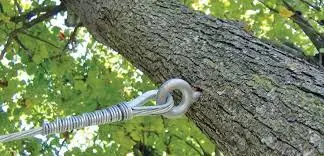
Second, trees are essential for lessening the effects of urban heat islands because they provide shade and lower surface temperatures in crowded locations. By creating green spaces and increasing tree cover in cities, we can lower ambient temperatures, reduce energy consumption for cooling, and improve overall urban livability.
Finally, through improving resilience to extreme weather events, trees aid in the adaptation to climate change. Their canopies shield them from strong winds and rain, and their vast root systems aid in preventing soil erosion and flooding. Additionally, trees act as natural windbreaks, reducing wind speeds and minimizing damage from hurricanes and cyclones.
To sum up, trees are essential friends in our fight against climate change and in helping us adapt to its effects. By harnessing their cooling effects, mitigating urban heat islands, and enhancing resilience to extreme weather events, trees offer practical and sustainable solutions for building climate-resilient communities. Let's continue to plant and preserve trees to secure a greener, more relaxed, and more resilient future for generations to come.
Green Solutions for Urban Growth: Enhancing Infrastructure, Cooling Cities, and Managing Storms
Urban planning and development are undergoing a green revolution, focusing on integrating nature into city landscapes to address environmental challenges. Let's explore how green infrastructure is transforming urban areas through urban heat island mitigation and stormwater management.
Firstly, green infrastructure incorporates natural elements like trees, green spaces, and porous surfaces into urban design.
These characteristics help decrease the impact of the urban heat island by offering shade, lowering surface temperatures, and encouraging evapotranspiration. By integrating greenery into cityscapes, urban planners can create more relaxed, livable environments for residents.
Trees, parks, and green roofs act as natural air conditioners, lowering temperatures and improving air quality. This enhances the comfort of urban dwellers and reduces energy consumption for cooling, leading to cost savings and environmental benefits.
Green spaces like parks and wetlands act as natural sponges, absorbing excess water and reducing the risk of flooding and water pollution. By incorporating green infrastructure into urban planning, cities can enhance resilience to climate change and create more sustainable and resilient communities.
Green infrastructure revolutionizes urban planning and development by offering multifaceted solutions to environmental challenges. By embracing nature-based approaches, cities can create healthier, more resilient, and sustainable environments for present and future generations.
Conclusion
Trees hold profound cultural significance across diverse societies. They serve as symbols of tradition, repositories of history, and wellsprings of artistic inspiration. Let's explore the cultural importance of trees through their symbolism in traditions and rituals, historical significance, and influence on creative expression.
Firstly, trees feature prominently in traditions and rituals worldwide, symbolizing life, renewal, and spiritual connection. Trees are deeply significant in religious rites, seasonal festivities, and cultural customs; from the sacred groves of ancient civilizations to the Christmas trees decked up with lights and decorations, they promote a sense of continuity and solidarity among generations.
Secondly, trees are imbued with historical importance, bearing witness to the passage of time and the evolution of human civilization. Ancient trees, such as the revered oaks of folklore or the towering redwoods of the Pacific Northwest, act as living historical landmarks that reunite us with our ancestors and constantly remind us of our place in the natural environment.
Lastly, trees inspire artistic expression in various forms, from literature and poetry to visual arts and music. The majestic beauty of trees has inspired countless artists, writers, and musicians throughout history, evoking emotions of awe, wonder, and introspection. Whether depicted in a landscape painting, celebrated in a sonnet, or immortalized in a symphony, trees continue to captivate and inspire creative minds around the globe.
In conclusion, trees are guardians of future sustainability, embodying the principles of stewardship, resilience, and intergenerational equity. We may create a healthy and prosperous future for future generations by acknowledging the significance of trees in supporting future well-being, encouraging stewardship and conservation, and strengthening resilience against environmental deterioration. Let's foster an attitude that values, respects, and values trees so that we can all benefit from their continued existence.
